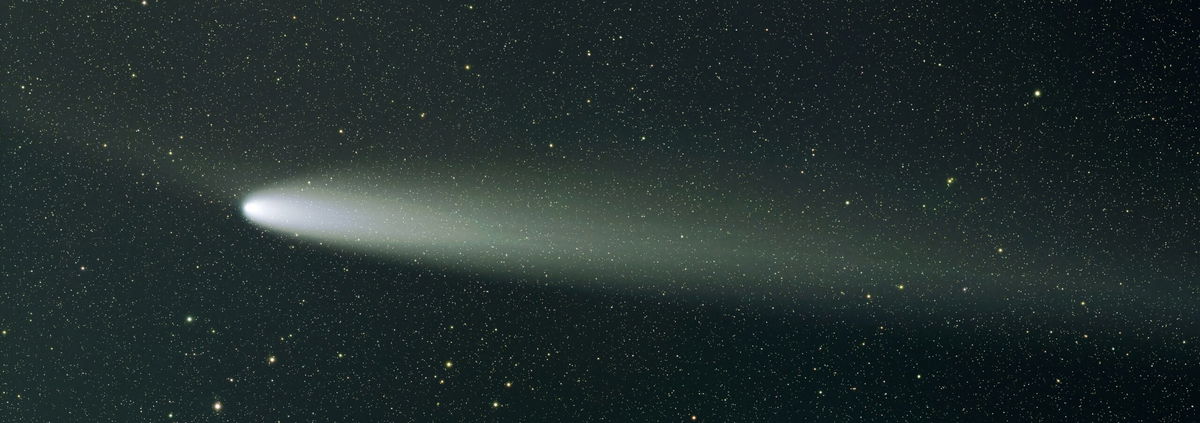Unlike comets that occur within the Oort Cloud or the Kuiper Belt, 3I/ATLAS moves along a hyperbolic orbit. Photo credit: Philipp Reutter/Shutterstock
The recent identification and report of Comet 3I/ATLAS has sparked widespread interest among astronomers, space agencies, and the curious public. As the third interstellar object confirmed to pass through our solar system, following ‘Oumuamua in 2017 and Comet Borisov in 2019, this celestial visitor provides researchers with a rare opportunity to study material formed outside our solar system.
Unlike most comets that originate from the Oort Cloud or the Kuiper Belt, 3I/ATLAS is not gravitationally bound to the Sun. Instead, it is clearly moving along a hyperbolic path, revealing that it came from far beyond our planet’s neighborhood. Its passage is temporary; it comes in, passes by, goes out again, and never returns.
Origin and discovery
Tracking from the southern sky over Chile
The comet was first detected on July 1 by the ATLAS (Last Asteroid Earth Impact Alert System) telescope network, with discovery observations made from the Rio Hurtado site in Chile. Once its orbit was calculated, astronomers confirmed its interstellar origin and gave it the official name C/2025 N1 (ATLAS). It was later upgraded to 3I to mark its status. third Known interstellar objects.
What makes 3I/ATLAS particularly important is not only its origin, but also the timing of its emergence. Comets are moving into parts of space and are becoming increasingly visible to both ground-based telescopes and instruments in orbit. This allows scientists to collect valuable data in the relatively near future, before the universe retreats back into deep space.
speed and trajectory
Visitors safely passing through Earth at high speed
One of the best aspects of 3I/ATLAS is its speed. Traveling at approximately 210,000 km/h, it is one of the fastest objects of its kind ever recorded. Despite its dramatic arrival, it poses no threat to Earth.
According to current orbital models, the comet is scheduled to make its closest approach to the sun in late October at a distance of about 1.4 astronomical units (about 210 million kilometers). The closest approach to Earth is at a much greater distance, so there is no risk of collision or dangerous debris.
This safe but close enough passage provides a valuable observation window. Both professional and advanced amateur astronomers are expected to track this object, which develops a more pronounced tail as it approaches the Sun.
Ingredients and scientific value
Natural samples from another star system
Comets act as time capsules, preserving ancient material from its place of origin. Because 3I/ATLAS comes from outside our solar system, its composition could help scientists understand how other planetary systems form.
Early spectral measurements suggest that this comet, like many comets endemic to our system, contains water ice, carbon-based compounds, and volatile gases. However, changes in its dust patterns and the proportions of certain molecules suggest that its chemical history is different. This makes 3I/ATLAS an extremely valuable research target, especially for observatories such as the James Webb Space Telescope.
Important points
- 3I/ATLAS is the third interstellar object confirmed to have entered the solar system.
- It poses no danger to Earth and passes at a safe distance throughout its orbit.
- Its high speed and hyperbolic orbit confirm that it originated from outside the Sun’s gravitational influence.
- Scientists hope that studying its composition may reveal clues about how other star systems formed.
3I/ATLAS is expected to gradually brighten as it approaches the Sun, and may become visible with binoculars or small telescopes even under dark skies. Such behavior is notoriously unpredictable, so it remains uncertain whether it will become widely visible to the naked eye.
Nevertheless, this comet’s brief visit represents a rare scientific moment. Once 3I/ATLAS leaves the solar system, it will never return. For astronomers, the coming months will be a race against the clock to learn as much as possible about this fleeting guest before he returns to the vast unknown.








